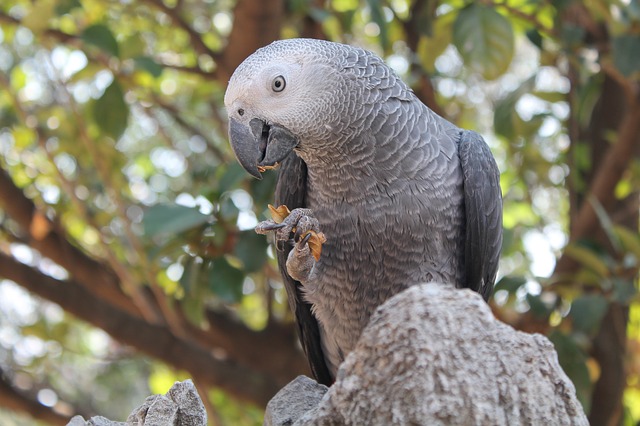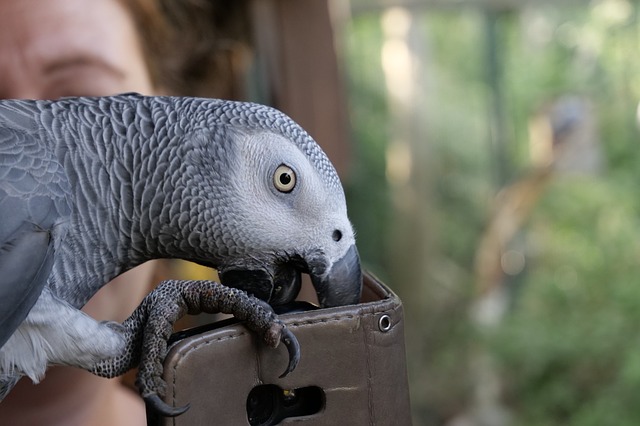This parrot is native to Equatorial Africa and lives in dense forests and virgin forests on the banks of rivers. In the wild, they nest in the hollows of trees.
It grows to a size of 35-40 cm and lives about 60 years, so it is very important to really think about its acquisition, it is for life. Typical for him is a red tail. Sex can be determined only by endoscopy of the veterinarian.
It is said that he can have the intellect of a 4-year-old child and can use up to 200 words. Beautifully repeat various sounds such as doorbell, phone, etc. That is why it is so popular.
Its breeding is really complicated, beginners should first get a parakeet or corel.
Greyjack is very territorial and finds in the family only one person whom he loves and tolerates others. In some cases, it can also attack the family. Most often, he does not like small children, so you have to keep an eye on them, and you can not leave the parrot unattended.He hates any changes and can begin to hurt himself. He begins to pluck feathers, sometimes to the flesh, and his treatment is very complex and does not always succeed. You also need to pay attention to its claws and strong beak, which can do a lot of harm.
Kaiko is very playful and likes to climb. Suitable for him are some kind of ladder or bird tree. It requires many different stimuli and impulses, so as not to get bored. In a cage or aviary, he must have about 5 toys that need to be replaced. If he gets bored, he can devastate everything around him and become aggressive.
His diet must be changed. In specialized stores there are already a lot of complete feeds from different manufacturers. It is also recommended to supplement this diet with fruits and vegetables such as bananas, date palms, tomatoes, carrots, pears, tangerines and oranges. Most parrots love to eat corn cobs.. But never give a parrot avocado, it is toxic to him. Even if he does not eat everything, you have to try what he likes. He needs to have squid bones, sand and sand for digestion.
For home breeding, a cage with a height of about 1 meter and a width of 60 cm is suitable. In the cage, he should comfortably spread his wings. Every day you need to spend at least 3 hours outside the cage.
Also, during the flight it will be short, but only a few feathers will be enough, because the parrot is heavy and can fall to the ground and get injured.
